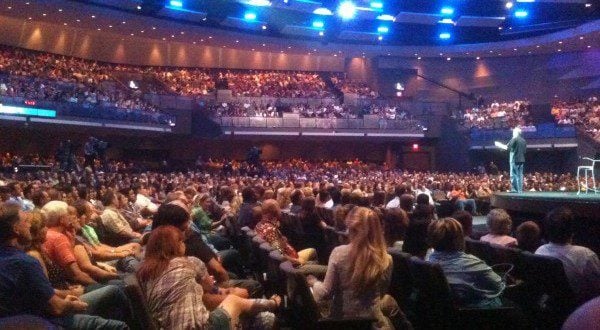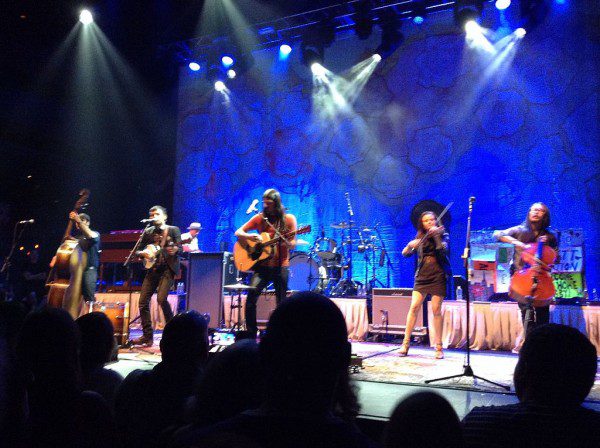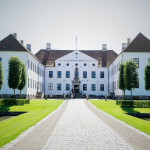Secularism is definitely on the rise. What will this mean for Christianity?
![Image by Joe Ravi [CC BY-SA 3.0] via Wikimedia Commons](https://wp-media.patheos.com/blogs/sites/503/2015/11/Interior_of_St_Andrews_Catholic_Church_in_Roanoke_Virginia-e1446650205580.jpg)
A few of the key findings were basically confirmations of what everyone has known for some time. For one thing, the infamous “nones” (those who check “none” when asked their religious affiliation) continue to grow in number. Nones are now 23% of all American adults, up 7% points from their 2007 numbers (16%).
The nones include two primary groups–both of which might be generally labeled “religiously unaffiliated theists”: (1) The “spiritual but not religious” and (2) the “spiritual and independently religious.” These two groups are what remains after you subtract the smaller subset of atheists and agnostics.
The first group, “spiritual but not religious,” are the people who get spiritual nourishment from, let’s say, yoga, foodie excursions, beach-walking, Sufjan Stevens concerts, or extreme sports (etc.). They made the front page of USA Today in 2010, with the headline: “72% of Millennials ‘more spiritual than religious.’” They are sometimes known by their snappy nickname: “SBNR.”
In 2007, the SBNR comprised barely half of the nones. The other (roughly) half of the nones are the second group above, those who identity positively with spirituality but who also practice traditional religious activities (going to church, praying, reading the Bible, etc.). But their religious activity is eclectic, independent, and inconsistent. They might attend a variety of churches or participate in a variety of religious experiences, but do not identify strongly with any single one. They are spiritual and religious, but still unaffiliated. Nonetheless, religion is still important to them.
Based on the recent Pew findings, it’s this group that seems to be declining. The nones are becoming more atheistic and less religiously oriented. They are becoming more secular.
Here are some of the key findings regarding the secularizing of the nones:
61% of all nones believe in God, down from 70% in 2007.
20% pray daily, down from 22% in 2007.
13% believe religion is very important, down from 16% in 2007.
9% attend services weekly, down from 10% in 2007. (not a big dip, but at this point you can’t get a whole lot lower).
Are these nones becoming less “spiritual” too? Not if spirituality is measured by a feeling of “a deep sense of spiritual peace” and a “deep sense of wonder about the universe.”
On those indicators both religiously affiliated Americans and nones have increased since 2007. The percentage of increase is slightly higher for religiously affiliated on the feeling of a “deep sense of spiritual peace,” but the nones–perhaps not surprisingly–edge out the religious on the feeling of a “deep sense of wonder about the universe.”
This suggests, to me, that Christianity should increasingly tap the reservoir of spirituality (wonder, longing, peace, transcendence) etc. Christianity has historically been very good at exploring these themes and facilitating spiritual depth and experiences. It also seems that spirituality might be the one point of contact in common between Christianity and the nones.
But it may be that the nones have found Christian churches devoid of vibrant spirituality and are content to look elsewhere for it.
By way of some summary reflections, a few more things that seem to pop out from these findings:
1. America is still very religious on the whole–and religiosity is not declining among the religiously affiliated.
2. The percentage of Americans who are religiously affiliated continues to shrink (even if slowly but steadily).
3. The percentage of Americans who are nones continues to rise–especially among the younger generations. This means that, however stable Christianity might appear at present, it’s going to look very different when the millennials and Gen Y replaces the older, more religious, generations. This is what I mean by, “the new normal is upon us.”
4. Secularism is on the rise and traditional religion–on the whole–is (howsoever slowly) declining.
5. Those who are religiously affiliated remain very religious in orientation.
6. We are going to see increasing clashes of the religious and the secular in coming days. It’s already happening, but will continue to happen with more intensity.
What do you see?
For more posts and discussions on theology and society, like/follow Unsystematic Theology on Facebook












